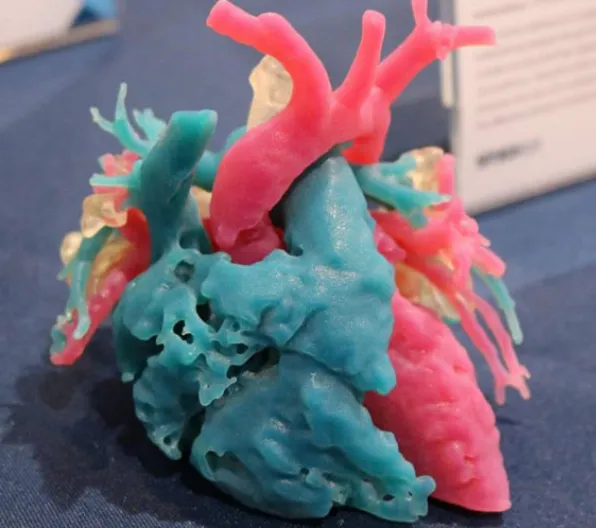Additive manufacturing has brought a transformative shift across multiple industries, and healthcare is no exception. Medical 3D printing, in particular, has emerged as a powerful tool, enabling the creation of personalized medical devices and solutions that significantly improve patient care and treatment outcomes. In this article, we’ll explore how additive manufacturing is reshaping the medical industry, from patient-specific implants to surgical tools and prosthetics.
What Is Medical Additive Manufacturing?
Medical additive manufacturing, also known as 3D printing, is a technique that uses computer-aided design (CAD) software to create medical devices and structures. The process involves sending a digital model to a 3D printer, which builds the object layer by layer. This method is highly versatile, utilizing materials such as polymers, metals, and ceramics, depending on the required properties of the device.
Unlike traditional manufacturing methods, additive manufacturing allows for the creation of complex geometries and customized solutions that fit individual patient needs. This results in faster production times, enhanced accuracy, and improved patient outcomes.
Key Applications of Additive Manufacturing in Healthcare
Additive manufacturing has a wide range of applications within the medical industry. Here are a few areas where it is making a significant impact:
- Surgical Instruments and Guides: 3D printing is used to produce custom surgical instruments and guides. These tools help improve surgical accuracy by ensuring that procedures are carried out with precision, such as placing a screw in the correct position during spinal surgery.
- Prosthetics: Personalized prosthetics are another area where additive manufacturing excels. By scanning a patient’s limb, a prosthetic device can be designed to match the patient’s anatomy. This results in better-fitting, more comfortable prosthetics.
- Bone and Joint Reconstruction: Additive manufacturing enables the production of custom implants for joint replacements and bone reconstructions, such as knee, hip, and jaw surgeries. Additionally, 3D-printed synthetic cartilage is being developed to aid in joint repair.
- Artificial Organs and Tissue: 3D bioprinting is a revolutionary application where living cells are used to create models of organs or tissues. This process has the potential to change the future of organ transplants and regenerative medicine by enabling the printing of tissues such as skin, heart models, and even liver tissue.
- Patient-Specific Implants: One of the most promising uses of 3D printing in healthcare is the development of patient-specific implants. By using a patient’s medical scans (CT or MRI), a precise 3D model of their anatomy can be created, which is then used to design an implant that perfectly fits the patient’s needs.
How the Process Works
The process of creating a medical device through additive manufacturing typically follows these steps:
- Imaging: The process begins with medical imaging (e.g., CT or MRI scans) to capture a 3D image of the patient’s anatomy.
- CAD Modeling: The imaging data is then converted into a 3D model using CAD software, allowing the design to be adjusted for precise requirements.
- 3D Printing: The digital model is transferred to a 3D printer, which builds the object layer by layer, following the design specifications.
- Post-Processing: After printing, the device may undergo further steps such as sterilization, polishing, or other finishing processes to ensure it meets the necessary standards.
- Implementation: Finally, the 3D-printed device is ready for use in the patient’s treatment.
Why Additive Manufacturing is a Game-Changer in Healthcare
There are several reasons why additive manufacturing is gaining traction in the medical field:
- Customization: Traditional manufacturing methods often rely on mass production, which makes customization difficult and costly. With additive manufacturing, creating personalized medical devices, from prosthetics to implants, is quick and efficient.
- Precision: 3D printing allows for highly detailed and accurate designs. For medical devices, where precision is critical, this means better-fitting implants, tools, and devices tailored to the patient’s specific needs.
- Reduced Waste: Traditional manufacturing methods can generate significant waste, as material is often cut away or discarded. Additive manufacturing, however, only uses the material necessary for the finished product, reducing waste and lowering material costs.
- Faster Production: Compared to traditional manufacturing, additive printing is faster. What might take days or weeks in conventional production can often be completed in just hours, especially for custom parts or devices.
- Innovation: 3D printing opens up new possibilities for medical product design and innovation. It allows for the exploration of unconventional designs and materials that could lead to breakthroughs in medical technology.
Additive vs. Subtractive Manufacturing
When comparing additive manufacturing to subtractive manufacturing, the key differences lie in the creation process. Subtractive manufacturing involves removing material from a larger block to form a part, which can be wasteful and time-consuming. On the other hand, additive manufacturing builds objects layer by layer, which not only minimizes waste but also allows for greater design freedom.
Additive methods are particularly advantageous when producing complex or customized shapes that would be difficult or impossible to achieve with subtractive methods. Moreover, additive manufacturing tends to be faster and more cost-effective for small-batch, customized production.
The Future of Additive Manufacturing in Healthcare
As medical additive manufacturing continues to advance, the potential applications in healthcare are vast. The ability to create customized, high-precision medical devices and prosthetics will continue to improve patient care and outcomes. Additionally, the emerging field of 3D bioprinting holds promise for creating functional tissues and organs, potentially revolutionizing the way we approach organ transplants and regenerative medicine.
From personalized implants to innovative surgical tools, the possibilities are endless. With ongoing advancements in 3D printing technologies and materials, the future of healthcare is set to become more tailored, efficient, and effective than ever before.







